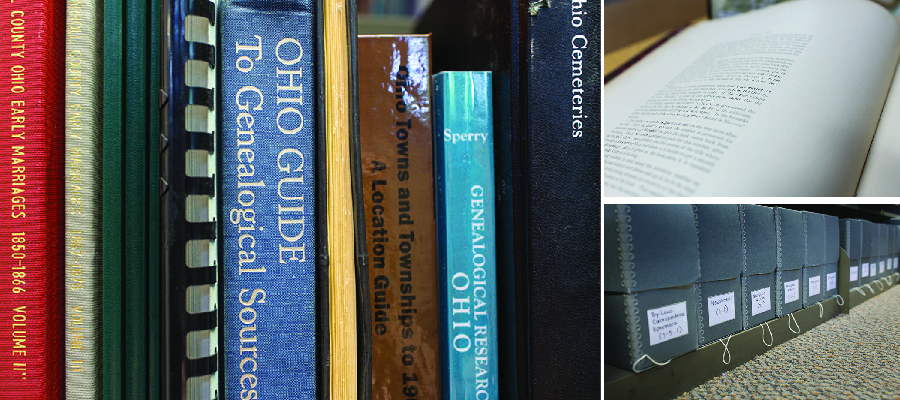Tips & Tricks for Genealogy Research
5 Ancestry.com Power Tips
courtesy of Family Tree University
- SEARCH WITH WILDCARDS. Ancestry.com lets you use a ? to stand in for one letter or a * to stand in for zero to five letters in a name. You can use a wildcard as the first or last character, but not both, and the name must have at least three non-wildcard characters.
- GET AUTOMATIC HINTS. Ancestry.com can automatically search its vast collections of records and family trees for your ancestors. Just keep your family tree in Family Tree Maker software for Windows or Mac or create a free Ancestry Member Tree online. Working in the background, Ancestry.com searches its records and family trees for matches to people in your tree. A waving leaf by a name in your tree indicates a potential match. Just click to view the hint. You can review the record to make sure it pertains to your ancestor and then attach it to your tree.
- EDIT YOUR TREE ON THE GO. Use Ancestry.com’s free mobile app for Apple or Android to create and edit your Ancestry Member Tree on your phone or tablet. You can add records you find in Ancestry.com, as well as those uploaded from your device. Changes will automatically sync to all your devices.
- FIND IT FREE. Search the Ancestry.com card catalog on the keyword free, and many of the results will be free databases. You can access almost all of Ancestry.com’s records free from a library that offers Ancestry Library Edition on its computers. Check the website or ask your librarian to see if your library offers this service.
- DON’T LOSE ACCESS TO YOUR RECORDS. Anyone can create an Ancestry Member Tree for free and as a paying subscriber, you can attach records from Ancestry to people in your tree. But if you let your subscription lapse, you could be in for an unpleasant surprise: You’ll be able to access your tree and any records uploaded from your computer, but not the records attached to it from Ancestry.com.
To avoid this, when you attach a record to someone in your Member Tree, save a copy to your computer with a descriptive name so you can easily find it. You also could use Family Tree Maker software so you’ll have a copy of your family tree on your computer that automatically syncs with your online tree.
8 Places To Find Court Records Online
courtesy of Family Tree University
When conducting courthouse research, it’s perfectly permissible to wait until you get to a courthouse and then ask where each record you want is housed and how far back it goes. But in this day and age, it’s not the most efficient approach. First, the records may exist at another location, which can be a hassle or even a deal-breaker for those with limited time or transportation. Using online finding aids and digitized or microfilmed records can free up more of whatever time you have at the courthouse to dig for obscure or hard-to-find records. What a waste of time it would be to spend all your courthouse time copying vital records you could have accessed from home, only to leave untouched the probate packets you can’t access from home. Finally, sometimes it’s not possible to visit a courthouse in person. When you learn all you can online, you reduce the expenses of hiring a local to research for you or of paying courthouse staff to copy and mail you documents, which not all offices will even do.
The most valuable online sources for learning what county data exists are these:
- county offices and their websites
- county genealogical societies and their websites
- websites devoted to county-level research, like USGenWeb or RootsWeb sites
- recently-published guides to local or regional genealogical research
- online card catalogs like WorldCat, the Family History Library (see below), and favorite regional libraries
- online card catalogs of your favorite genealogical data websites
- for older vital records now under custody of the state: state archives and their websites, state genealogical
- guides like Family Tree Magazine’s State Guide series and The Family Tree Sourcebook
8 Quick Genealogy Website Search Strategies
courtesy of Family Tree University
1. Start with a general search on your ancestor’s name. Run additional searches as needed using initials, maiden name, nicknames and spelling variations.
2. Pay the most attention to top matches. Most genealogy websites prioritize your results to put the best matches at the top.
3. Use search filters. These let you sort matches by place, time period, record type and more. Remove filters if you get too few matches.
4. Note potential matches. You may find records that look mostly right but have important discrepancies. Note possible matches for further evaluation later.
5. Broaden name searches. When you don’t know someone’s full name, enter part of his name plus the name of a parent or spouse. This is a great way to find women’s maiden or married names or to find a couple’s children.
6. Look for less-common names. Ancestors with common surnames sometimes had family members with less-common names. Try searching for those names instead—and then look for your ancestor in their records.
7. Explore specific record sets. Some sites have database catalogs or lists. Search or browse within specific databases, such as collections of death or marriage records from an ancestral county.
8. Find search advice. Look for search tips on sites you search, such as whether a site lets you search with wildcards to catch similarly spelled names (such as cars* to find Carsidy, Carseldine and Carsley).
Other Genealogical Hints
try this blog from Family Tree Magazine – Genealogy Insider
Previous posts:
1. Finding Clues in Ancestry.com’s New Probate Collection
2. 12 Tips to Make the Most of the Virtual Genealogy Conference Sept. 18-20

